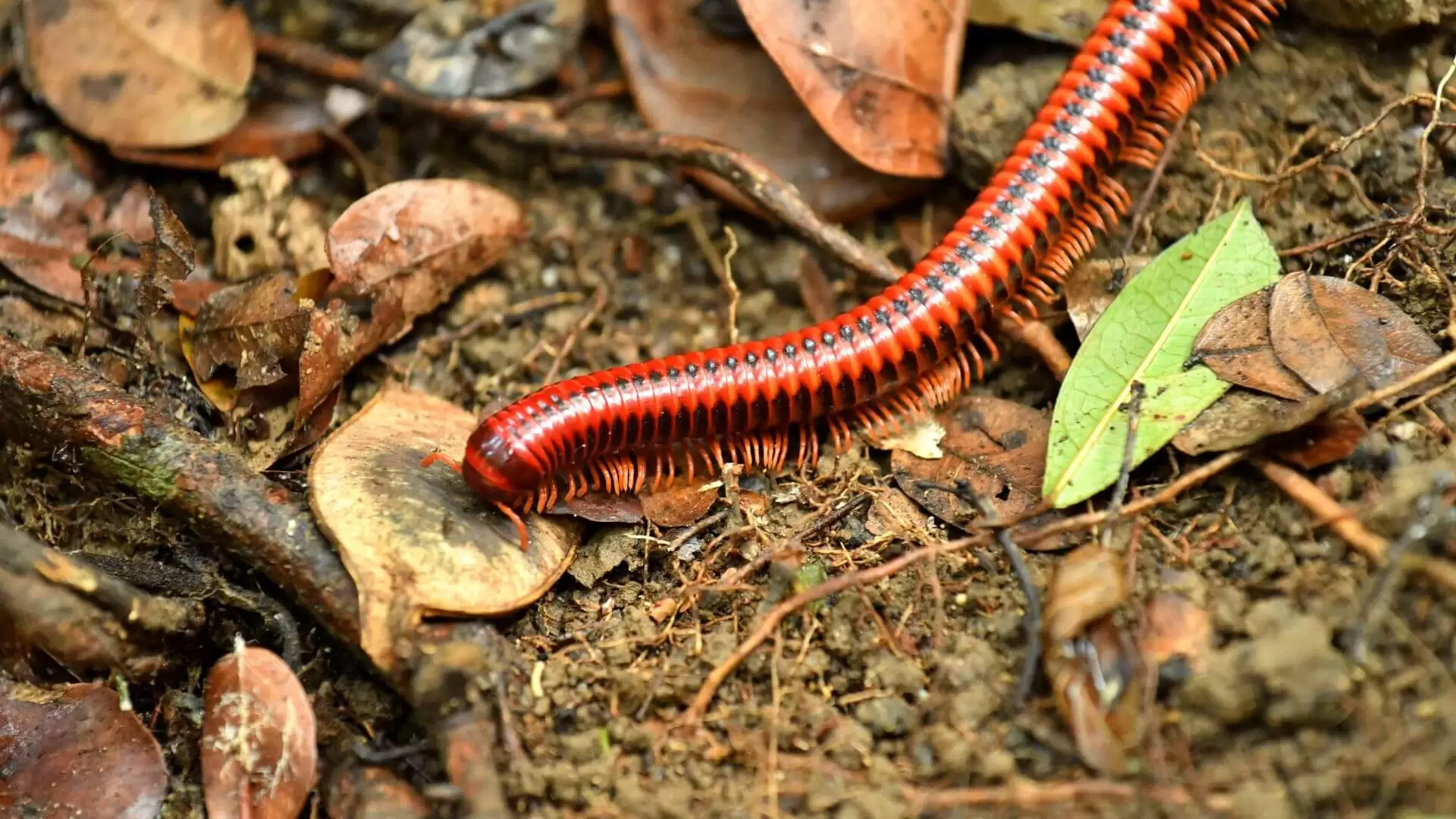The gigantic creature, before the dinosaurs, was almost 3 meters long and weighed 50 kilos
One hundred million years before the age of the dinosaurs, nightmarish creatures crawled through what is now England. They were similar to a millipede, but the size of a car. The largest fossil has been found on a beach in the north of England.
The fossil, the remains of a creature called Arthropleura, dates to the Carboniferous Period, about 326 million years ago. It was the largest known invertebrate animal of all time, surpassing even the ancient sea scorpions that held the previous record.
The specimen, found on a Northumberland beach about 40 miles north of Newcastle, is made up of multiple segments of jointed exoskeletons, very similar in shape to modern millipedes.
It is only the third such fossil ever found. It is also the oldest and largest: the segment is about 75 centimeters long, while the original creature is estimated to have been around 2.7 meters long and weighed around 50 kilograms. The results are published in the ‘Journal of the Geological Society.
A casualty
The fossil was discovered in January 2018 in a large block of sandstone that had fallen from a cliff onto the beach at Howick Bay. “It was a complete fluke,” says Neil Davies of Cambridge’s Department of Earth Sciences, lead author of the paper. “The rock fell, cracked, and perfectly exposed the fossil, which one of our former Ph.D. students happened to see as he was passing by,” he explains.
Unlike the cool, wet climate the region has today, Northumberland had a more tropical climate in the Carboniferous Period, when Britain was near the Equator. Invertebrates and early amphibians lived on scattered vegetation around a series of streams and rivers. The specimen identified by the researchers was found in a fossilized river channel: it was probably a molted segment of the Arthropleura exoskeleton that filled with sand, preserving it for hundreds of millions of years.
The fossil was unearthed in May 2018. “It was an incredibly exciting find, but it was so big we had to carry four of us up the cliff,” recalls Davies. The fossil was returned to Cambridge so that it could be examined in detail. It was compared with all previous records and revealed new information about the animal’s habitat and evolution. It can be seen that the giant millipede only existed in places that were once located on the equator, such as Great Britain during the Carboniferous. Previous reconstructions have suggested that it lived in coal swamps, but this specimen showed that Arthropleura preferred open woodland habitats near the coast.
There are only two other known Arthropleura fossils, both from Germany and much smaller than the new specimen. The researchers believe that there is still much to learn about these creatures. “Finding these giant millipede fossils is rare, because once they die their bodies tend to disarticulate, so the fossil is likely to be a molted shell that the animal shed as it grew,” says Davies. “We haven’t found a fossilized head yet, so it’s hard to know everything about them,” he adds.
The Giant’s Diet
The large size of Arthropleura has previously been attributed to a spike in atmospheric oxygen during the late Carboniferous and Permian periods, but because the new fossil comes from rocks deposited before this spike, it shows that oxygen cannot be the only explanation.
Researchers believe that to grow to such a large size, Arthropleura must have had a nutrient-rich diet. “While we can’t know for sure what they ate, there were plenty of nutritious nuts and seeds available in the leaf litter at the time, and they may even have been predators feeding on other invertebrates and even small vertebrates like amphibians,” says Davies.
These animals crawled around the equatorial region of the Earth for about 45 million years, before going extinct during the Permian period. The cause of their extinction is uncertain, but it could be due to global warming which made the climate too dry for them to survive, or the rise of reptiles, which outcompeted them for food and soon dominated the same habitats.

